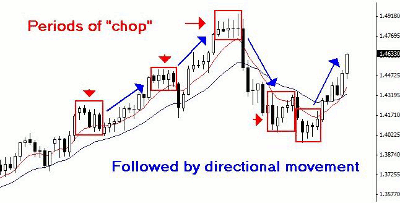Trader and educator Nial Fuller describes a five-step process that allows forex traders to identify the dominant trend in the markets, form a bias, and develop a plan at the onset of each trading week.
Knowing how to properly identify trend and market bias at the start of the trading week is a vitally important thing every serious forex trader must know how to do. Each Sunday, you should take about 30 minutes to analyze the markets that you trade and decide what you think is most likely to happen over the course of the upcoming trading week.
It is very important to do this when the market is closed so that you are completely unemotional; this will allow you to formulate an objective market bias that is influenced mainly by logic and common sense instead of emotion. Here are some practical tips that will allow you to effectively analyze the market at the start of each week so that you have a plan for the week ahead.
Take Notes
As you analyze the market, you should make notes in your trading journal or in the notepad on your computer. You should jot down anything that you think is obviously important about the markets you trade; this can be significant levels or specific price action patterns or even important impending news events. This information will help you formulate a bias to work off of for the upcoming week. This exercise will help to get your mind in sync with the current ebb and flow of the market.
Identify Recent Market Conditions
You want to ask yourself some questions as you analyze and take notes about the market. Look at the last two weeks to one month of price movement on the daily chart and ask yourself, “What is the most recent condition of the market?” Is the market trending higher or lower, or is it consolidating sideways?
The recent or near-term market momentum is the most important factor to consider as a daily chart price-action trader. We want to try and make sure we are trading with the recent daily chart momentum at all times, as this gives us the best chance at profiting in the near term. Make a note of the most recent market condition over about the last month’s time.
Define Key Support and Resistance
After gauging and identifying the current market condition, you will need to identify and draw the obvious, or key support and resistance levels. I start with the daily chart, as I mainly focus on this time frame. I will draw in the obvious support and resistance levels over about the last three to six month’s worth of price data.
This is not an exact science, but after some screen time and practice, your ability to identify the most important support and resistance levels in the market will become second nature.
I also use the daily 8- and 21-period exponential moving averages (EMAs) to help identify dynamic (moving) support and resistance levels, as well as to help with daily chart trend analysis. (See these EMAs on the chart example below.)
Using Your Weekly Bias
Upon identifying the near-term market condition and drawing in the significant support and resistance levels, you will have a solid guide to use for the upcoming trading week. If your bias for the upcoming week is bearish, you would watch for forex price action sell signals forming within the bearish market structure from the key resistance levels that you previously identified.
If you have a bullish bias for the upcoming week, you would watch for price action buy signals forming within the bullish market structure from key support levels that you previously identified.
To Trade or Not to Trade
If your bias for the upcoming week is neutral because the market has been very choppy recently and you are largely unsure about the upcoming week’s direction, you may elect not to trade at all. Often, not trading at all is the fastest way to make money because you are avoiding losing trades and eliminating the temptation to overtrade and overleverage.
The key to successful long-term trading lies in knowing exactly what your trading edge is and only trading when it appears. In other words, trading like a sniper and not a machine gunner.
Example Chart
If you analyze any price chart, you are likely to notice that most markets have a tendency to make substantial directional moves followed by periods of consolidation. This means that some weeks you might see chop or sideways movement for the entire week, and other weeks, you will see strong directional movement.
In the example below, we see the EUR/USD daily chart. In the red boxes, we see periods of around four or five days of consolidation and choppy price action followed by a stronger directional move. Even in trending markets like we see below, the market is likely to have periods of sideways movement before and after periods of strong directional movement. Thus, by doing some pre-week analysis, we can develop a good, educated opinion of what the market is most likely to do over the course of the upcoming week.
For example, if the market has recently consolidated for four or five days but is in an overall uptrend, we can safely assume that there’s a good chance of a larger up move coming soon and a resumption of the trend.
Alternatively, if the market has just moved significantly up or down over the course of the previous week, there’s a better chance it will “take a breather” and consolidate for at least a couple days in the upcoming week.
Of course, these are by no means concrete rules; they are just examples of how you can use the previous week’s price movement to develop your bias for the upcoming week in the market.
As every trader should know, no two days in the market are ever exactly the same, so we cannot develop hard-and-fast rules. Instead, we need to be flexible in our thinking and in our approach to the markets.
We can, however, put the odds in our favor by doing some pre-week analysis based on objectivity and logic as well as trading with a simple, yet effective strategy like forex price action.
By Nial Fuller, CEO and founder, LearnToTradeTheMarket.com
Nial Fuller is CEO and founder of the Web’s foremost trading education community, Learn To Trade The Market, a global leader in forex trading education and training.
The Learn To Trade The Market Forex Price Action Trading community has become a vital education resource for aspiring forex traders.






















